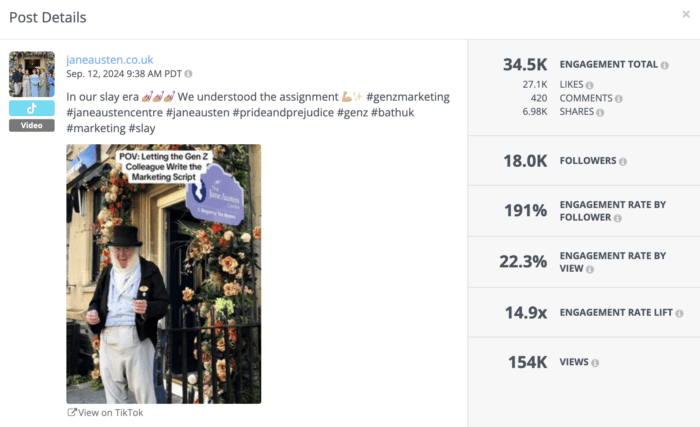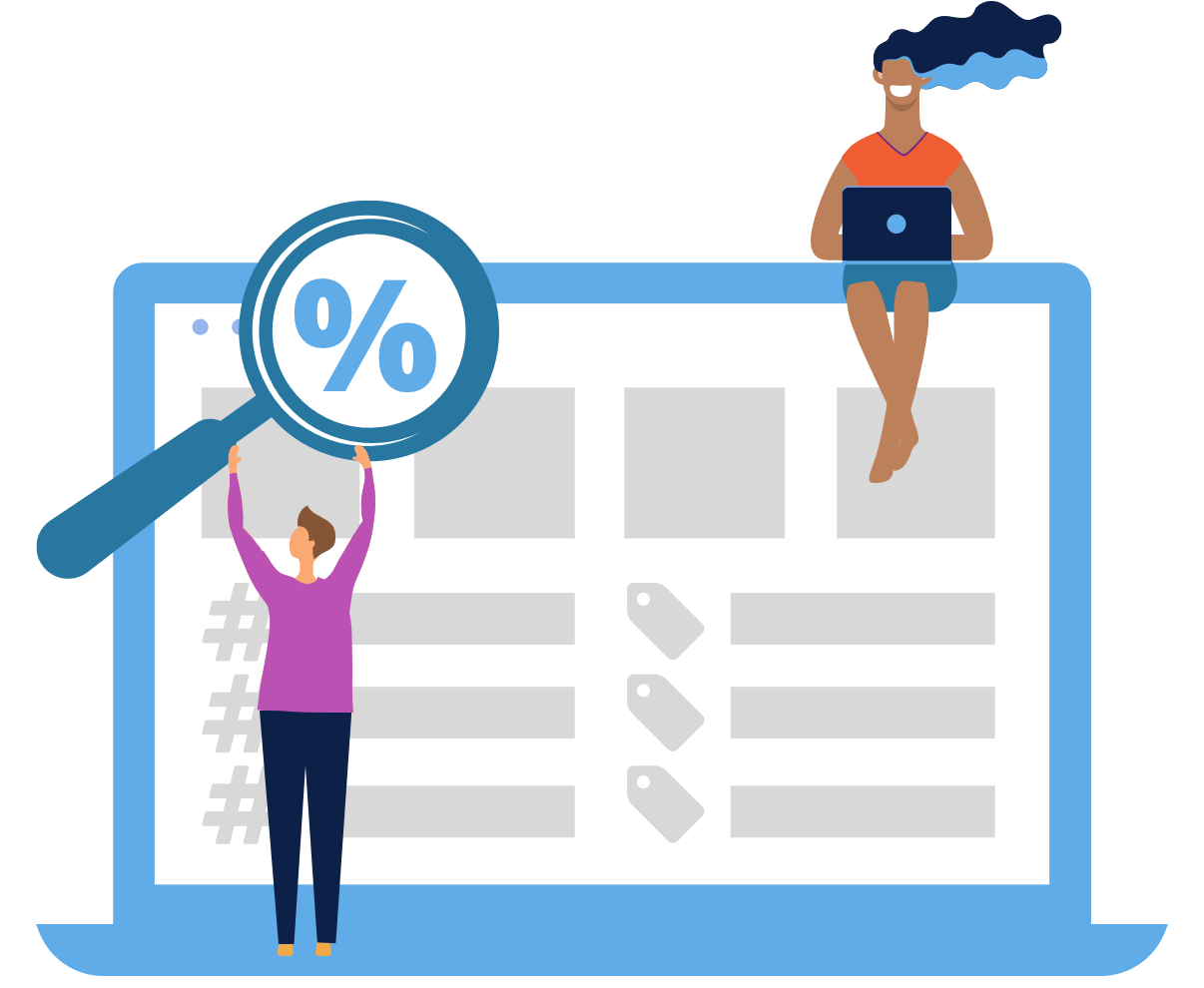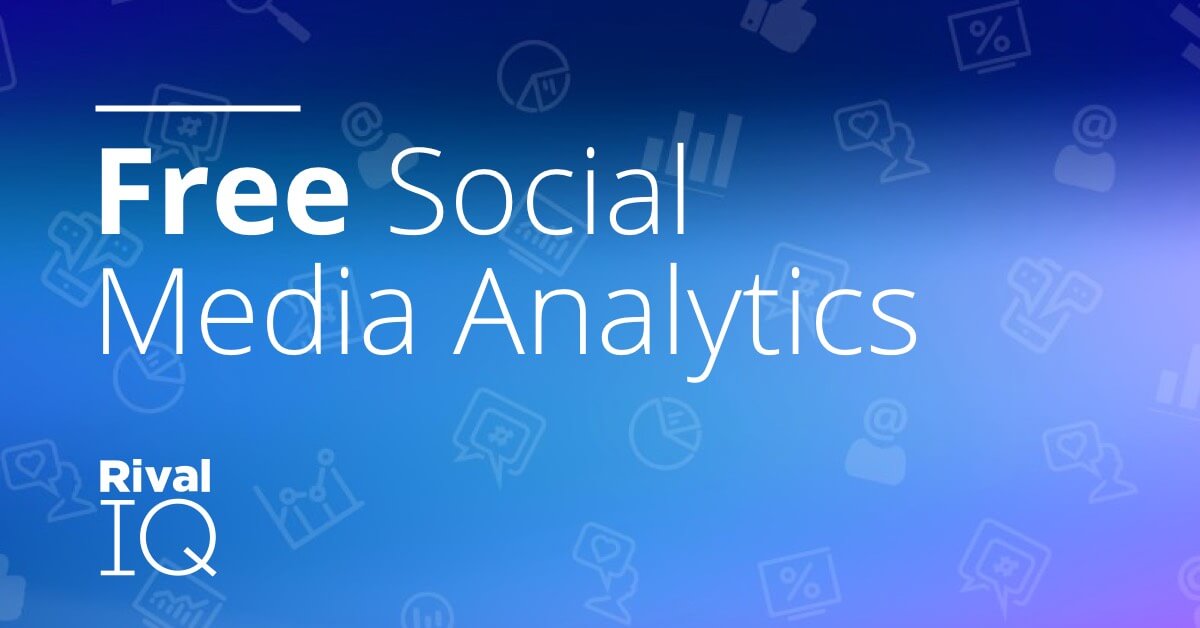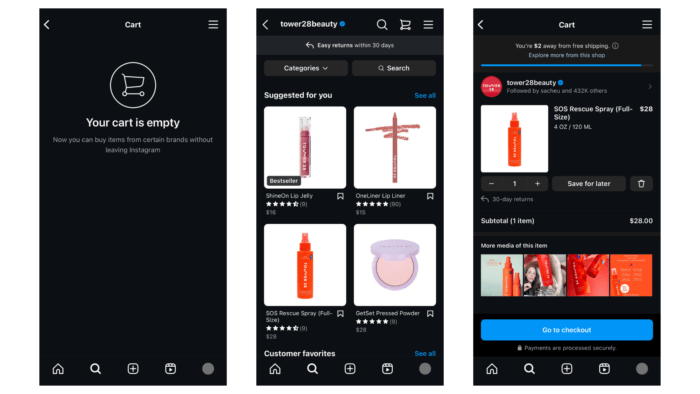As of this year, approximately 5.16 billion people around the world actively use social media. To put that in perspective, that’s more than half (59.3%) of the global population! Social media continues to grow and evolve at lightning speed, and keeping up is more crucial than ever. With so many users making new demands and platforms constantly shifting, what worked even a year ago might not cut it today.
It’s crucial that your business stays ahead of the curve, so we’ve put together a shortlist of the five major social media trends and the corresponding best practices to tackle them. Seizing these trends will give you a competitive edge and set you up for success this year and beyond.
So, what are the latest social media trends?
Social Media Trend #1: AI gets a promotion
In just a few years, artificial intelligence (AI) has shifted from being a futuristic buzzword to becoming a major part of social media marketing. Nearly 60% of marketers already use AI to enhance their social media efforts, and this number is expected to continue growing.
AI isn’t just about chatbots or scheduling posts anymore. It now plays a role in content creation, capable of everything from fully written tweets and media generation to voiceovers and closed captions. Today, social media managers who learn to collaborate with AI can lower costs, save time, and scale their campaigns faster than ever.
However, as an interesting experiment by Hootsuite found, while AI-generated social posts can be quite effective and engaging, they’re not necessarily a replacement for real people. In the case of the experiment, ChatGPT garnered more total engagement while the human-written posts led to more meaningful actions, such as profile visits, link clicks, and bookmarks.
And then there are the conversations around the ethics and accuracies of AI. As AI continues to evolve, concerns are rising about misinformation, bias, and the potential for dehumanizing interactions. Marketers will need to consider the implications of relying too heavily on AI-generated content, especially in terms of maintaining credibility and trust with their audience.
So what should you do?
Strike a balance by using AI as a collaborative tool rather than a standalone solution. While AI can be a fantastic starting point — used to spark ideas or draft initial content — it’s crucial to remember that a human touch is still needed. Authenticity, emotional connection, and a deep understanding of your brand’s unique voice are all elements that AI has yet to master.
Companies will also do well to create standards and guidelines for using AI in their content strategies. This includes outlining ethical practices, such as being transparent about AI-generated content and ensuring accuracy in messaging.
And of course, to ensure your content is performing well, it’s essential to establish metrics for success. Use analytics tools to track engagement rates, follower growth, sentiment, and more. By leveraging social analytics platforms like ours, you can gain insights into which types of content resonate with your audience and effectively refine your strategies.
Start digging into your social media trends with a free Rival IQ trial. 
Social Media Trend #2: Authentic, playful personalities get lots of love
According to The Sprout Social Index™, the number one thing consumers say they don’t see enough of from brands on social media is authentic, non-promotional content. Younger audiences, especially Millennials and Gen Z, want to see the people behind the brand — not just the brand itself.
Gone are the days when brands could hide behind logos and sleek product shots. Today’s social media landscape rewards authenticity, humor, and a less filtered approach. Social users don’t want to be sold to — they want to connect with people who understand and reflect their lifestyles.
The “Gen Z edit” and “Gen Z marketing script” trend is a perfect example of this. The video trend features an (often older) brand employee promoting their business but with a twist. They were given a script filled with the latest Gen Z slang or the video was intentionally edited to highlight funny habits and behaviors.

Across industries, companies are tapping into a more casual and comedic tone. With younger staff at the wheel, they’re playfully poking fun at generational gaps and using slang or references that feel fresh and relatable. Not only is this entertaining but it also builds a sense of connection, showing there are real people behind the brand, not just a corporate logo.
So what should you do?
For brands, this shift means dropping the corporate mask and embracing a more transparent, personal approach. Consider the fact that 90% of consumers say authenticity is a key factor when deciding what brands they like and support. Whether it’s sharing behind-the-scenes content, reacting to cultural moments, or simply showing your team’s faces, consumers are far more likely to engage with content that feels genuine.
Start by creating content that feels less polished and more real. Lean into playful campaigns that reflect your team’s personality, without shying away from humor or self-awareness. And instead of focusing solely on selling, think about how you can offer value or entertainment to your audience in a way that feels natural and authentic.
Social Media Trend #3: Micro- and nano-influencers take center stage as storytellers
Influencer marketing isn’t just a trend anymore — it’s a full-blown marketing strategy that brands rely on. But while big-name influencers once dominated, the spotlight has shifted toward smaller creators. Micro- and nano-influencers, with their more intimate and engaged audiences, are now the go-to for brands of all sizes.
With platforms like Facebook, Instagram, YouTube, and TikTok giving rise to everyday people as content creators, it’s no surprise that audiences are gravitating toward influencers who feel like “real” people, rather than celebrities with unreachable lifestyles.
Another interesting development? While short-form videos like TikToks and Instagram Reels still reign supreme, there’s a growing demand for longer-form storytelling, especially in the form of “storytimes” told in short, engaging parts.
We saw this earlier this year when the viral TikTok series “Who TF Did I Marry?” — in which a woman told her story of being married to a pathological liar — took the internet by storm. What made it so powerful was the sense that you weren’t just watching a video but were on FaceTime with a friend telling a wild story.
This shift shows us that while quick, engaging content is crucial, audiences are equally drawn to authentic, longer stories when done right. Whether it’s a one-off 15-second clip or a multi-part series, smaller influencers are proving they can drive massive engagement by being real and relatable.
Find out what is a good engagement rate on social media. 
So what should you do?
When choosing influencers for your brand, sometimes it’s better to stick with less mainstream figures rather than pulling big names like the Kardashians (if your brand could even appeal to these names). While those big names work best for major brands like Coca-Cola, Ford, and Microsoft, small-to-medium-sized businesses are better off sticking with influencers with a subscribed audience range of 1,000 to 100,000 followers.
Partnering with micro- or nano-influencers allows you to tap into more niche, engaged audiences without breaking the bank. These creators are also often seen as more authentic because their lifestyles feel closer to their followers’ own. Ask yourself, who do you relate to better? Matthew McConaughey and his multi-million dollar lifestyle or the middle-class social media influencer who’s actually tried a product or service?
Also, embrace long-form content if you’ve got a captivating story to tell. While short-form is great for quick hits, long-form storytelling — especially when broken into digestible, binge-worthy parts — can help your brand build a deeper connection with your audience. At the end of the day, it’s all about trust and relatability. The more down-to-earth your influencer, the better the connection an audience is bound to make with your brand.
Social Media Trend #4: Social platforms are the new search engines
More and more, social media isn’t just where we scroll for entertainment—it’s where we go to search for information. Whether it’s discovering a new restaurant, finding product recommendations, or looking for how-to videos, people are turning to platforms like TikTok, Instagram, and even Pinterest to get answers, instead of heading straight to Google.
According to recent data, nearly half of Gen Z prefers searching on TikTok or Instagram over traditional search engines. And it makes sense. Social media’s visual format makes it easy to find exactly what you’re looking for and fast.
Knowing this, platforms have leaned into this trend by enhancing search features to make it easier to find content based on keywords and hashtags. Instagram, for example, now allows keyword searches beyond just hashtags, and TikTok has been optimizing its search function to help users discover more targeted content.
So what should you do?
Simply having a presence on social media isn’t enough. Brands should start optimizing their content for social SEO. That means incorporating keywords, hashtags, and clear descriptions that match what your target audience might be searching for. Pay close attention to the types of search queries happening on social and make sure your content aligns with those trends.
Think of your social media posts as answers to potential customer questions. If your content provides value, it’s more likely to show up in search results and keep users engaged.
Compare your social media performance to your top rival. 
Social Media Trend #5: Social media e-commerce thrives
The monumental growth of online shopping has put certain social media markets on a path to serious expansion. With platforms like Facebook Marketplace, Instagram Shop, and TikTok Shop leading the charge, social media has changed the way consumers discover and purchase products — and there seems to be no going back.
For instance, in 2023, TikTok saw an estimated 33.3 million users shopping directly on the platform, with 51.9% of marketers actively selling through TikTok.
Meanwhile, Facebook Marketplace and Instagram (also owned by Facebook) have seen massive success in making their interfaces easier for shoppers. Instagram, for example, cleared up the clutter of online shopping by allowing users to purchase products from businesses without leaving Instagram using its own Checkout feature.

This trend means your business has more avenues for making a sale than ever before. Lifestyle brands are particularly set to dominate the Instagram market since the platform is based around the idea of sharing said lifestyles and experiences.
So what should you do?
Don’t wait to get in on this trend. The combination of e-commerce and social media is such a natural marriage that up-and-coming brands can’t afford to ignore TikTok Shop, Facebook Marketplace, and Instagram Shop. Millennials and Gen Z are all about experiences and social media is where all of those life events are shared. It’s crucial that your business makes inroads into those experiences as soon as possible.
So here are a few pointers for conducting business in these spaces:
- Trim down the buying process. If you’re selling products that are simple and straightforward, then don’t clutter up the process by redirecting customers to your website from your social media posts. Engage in transactions directly through social media platforms like Instagram whenever possible. The last thing you want to deal with is an excess of abandoned internet carts.
- Utilize user-generated content. Your customers are not only a source of revenue, they are also your best chance at winning over new customers. Happy customers are worth far more than singing your own praise, so borrow their own words and images when marketing the products they choose. Of course, it’s best to ask for permission first.
- Use video whenever possible. Images are great, but videos are even better. Seeing video of your product in action gives your customers a real glimpse into what they can expect when they make a purchase.
- Use high-quality images. I cannot stress this enough. Time and time again I find businesses marketing their products on Facebook Marketplace or Instagram Shop using grainy or pixelated images. These low-quality images inspire more mistrust than a willingness to buy. Take the time to generate quality images to market your products and business.
Whatever you do, just don’t leave this open market on the sidelines to collect dust. Embrace the new way to sell.
And the shifts are bound to continue
Considering the speed at which the landscape has changed over the last year, there’s no telling how many of these social media trends will continue into 2025. If you’re looking to stay up-to-date with the latest social media news and best practices for business, be sure to check in with our blog regularly. Additionally, if you have any thoughts on our suggestions, feel free to find us on Twitter to share your feedback. We’d love to hear from you!
This post was originally published in 2021 and has since been updated.
